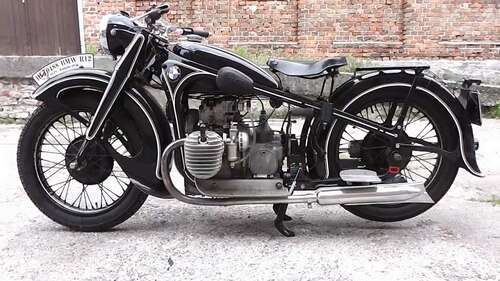
A motorcycle’s suspension is an integral component to not only rider comfort over rugged surfaces but also affects cornering and stability. Over the last century, many manufacturers have tinkered with different front suspension designs to determine the best. BMW was no different, and it struggled to find a solution that would enable them to win racing events in the 1930s over the competition that exhibited superior handling.
When the R12 hit the streets, it featured a telescopic fork with a hydraulic piston system for a smoother, more manageable ride. The telescopic fork design is one of the most commonly seen today, but the first to incorporate it and a hydraulic system was the BMW R12. Unfortunately, BMW engineers gave little, if any, thought to the R12 rear suspension, which was practically non-existent. A few small springs underneath the seat were the only means of reducing road force against the rider.

